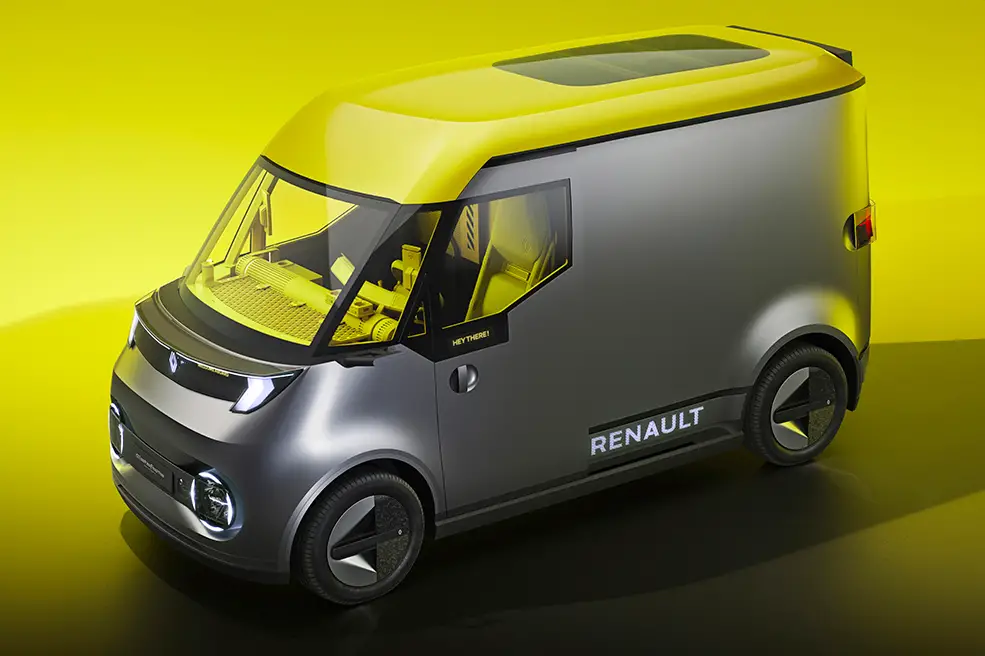A vision of the future of urban logistics, the new Renault Estafette Concept gives a nod to its 1959 namesake
The is the Renault Estafette Concept, a small electric van intended to show the potential of a new electric platform co-developed by Renault, Volvo and CMA CGM Group under the Flexis name.
Renault says the concept combines the length of a Kangoo with the load capacity of the larger Trafic, all with Clio-like agility. While its classic namesake was the first van to free up load space with a front-wheel-drive layout, Renault claims its new electric effort is set to be similarly pioneering thanks to its newly developed underpinnings.
Rather than embrace the retro trends of other new models (see the forthcoming Renault 5 and Alpine A290), the Estafette pays more subtle tribute to its forebear with large, low-slung round LED daytime running lights.
Other interesting design features include sliding front doors and a roller-style rear item, along with exterior screens that let other road users know when the van’s driver will return. A wraparound windscreen – triptych-shaped according to Renault – ensures great visibility.
Renault has also incorporated features intended to help delivery drivers’ jobs easier. The front sliding doors open in ‘one swift motion’, while the lack of traditional tail doors helps to speed up loading. The van’s walkthrough design incorporates a sliding door between cab and cargo area which closes automatically to keep items secure while drops are made.
Renault points out that cargo is never accessible or visible from outside the van while out on deliveries, with items accessed via the cab, in turn keeping the driver safe by removing the need to step out into the road.
“[The] Estafette Concept is the first example of what electric utility vehicles will look like tomorrow: purpose-engineered to drive in cities, compact, connected and built for fully sustainable delivery services,” said Flexis SAS CEO Phillippe Divry.
While it remains a concept vehicle for now, the new Estafette is slated for production in two years’ time according to Renault – some 67 years since the original was released.

Comments are closed